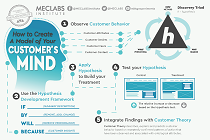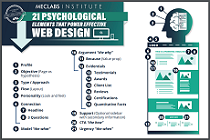
|
SUMMARY:
With even Google considering an ad blocker for Chrome, the idea that newly empowered consumers can choose not to view certain ads is an even more looming concern for marketers and publishers. So, in this Chart of the Week article, we take a look at why consumers block online ads, specifically broken down by different income levels. (As seen in the MarketingSherpa Chart of the Week newsletter. Click to get a free subscription to the latest research and case studies from MarketingSherpa.) By Daniel Burstein, Senior Director of Editorial Content |
We asked 2,400 consumers, sampled to reflect a close match to the U.S. population's demographics: Why do you block online ads? Select all that apply.

To see 35 charts from the study, download the free report.
Disruptive ads are the top consumer complaint at all income levels
Overall, three out of 10 Americans block online ads because they said, “I dislike large ads that pop up over the entire webpage.”
This was the top reason for every income group as well, peaking at a third (33%) of consumers making $50,000 - $74,900. When we asked consumers about how they prefer to receive ads from companies, online pop-ups were the second-to-least preferred type of ad, while social media ads, online banner ads and search engine ads ranked significantly higher.
More affluent consumers less swayed by value of advertising
The clearest trendline we discovered based on income was to the response “I know the value of advertising but I don’t care,” climbing from 9% of respondents making less than $24,900 to 14% of respondents making $75,000 or more.
This could be because less affluent customers are more likely to appreciate the free content than more affluent customers who consider it a waste of their (more valuable) time. One way you could put this data into action is to emphasize the free value they receive because of your advertising if your ideal customer is in a lower income demographic, but attempt to create premium, advertising-free experiences if your focus is a more affluent demographic.
Disdain for audio autoplay varies by income as well
“Audio AutoPlay of online ads is intrusive” grew from 17% of respondents making less than $24,900 to 24% of consumers making $75,000 to $99,900, before dropping to 16% of consumers making $100,000 or more.
This may be due to consumers’ work experience. The likelihood of working in an office setting could increase as income increases. However, once income climbs above $100,000, those same office workers might have a private office and not be on the floor of an open office floor plan, thus less sensitive to noise.
Whatever the reason, it brings up a more fundamental point when engaging in online advertising: consider not only the content of your advertising but the context in which your prospective customers are interacting with it.
Related Resources
Digital Advertising Chart: Why consumers block online ads
Advertising Chart: The types of ads consumers dislike the most (and the least)
Get the free 54-page report to see all the findings from the MarketingSherpa Customer Satisfaction Research Study.
Get Better Business Results With a Skillfully Applied Customer-first Marketing Strategy

The customer-first approach of MarketingSherpa’s agency services can help you build the most effective strategy to serve customers and improve results, and then implement it across every customer touchpoint.
Get More Info >MECLABS AI

Get headlines, value prop, competitive analysis, and more.
Use the AI for FREE (for now) >Marketer Vs Machine

Marketer Vs Machine: We need to train the marketer to train the machine.
Watch Now >Live, Interactive Event

Join Flint for Let AI Agents Market For You on March 18th at 2 pm EDT
RSVP Now >Free Marketing Course

Become a Marketer-Philosopher: Create and optimize high-converting webpages (with this free online marketing course)
See Course >Project and Ideas Pitch Template

A free template to help you win approval for your proposed projects and campaigns
Get the Template >Six Quick CTA checklists

These CTA checklists are specifically designed for your team — something practical to hold up against your CTAs to help the time-pressed marketer quickly consider the customer psychology of your “asks” and how you can improve them.
Get the Checklists >Infographic: How to Create a Model of Your Customer’s Mind

You need a repeatable methodology focused on building your organization’s customer wisdom throughout your campaigns and websites. This infographic can get you started.
Get the Infographic >Infographic: 21 Psychological Elements that Power Effective Web Design

To build an effective page from scratch, you need to begin with the psychology of your customer. This infographic can get you started.
Get the Infographic >Receive the latest case studies and data on email, lead gen, and social media along with MarketingSherpa updates and promotions.